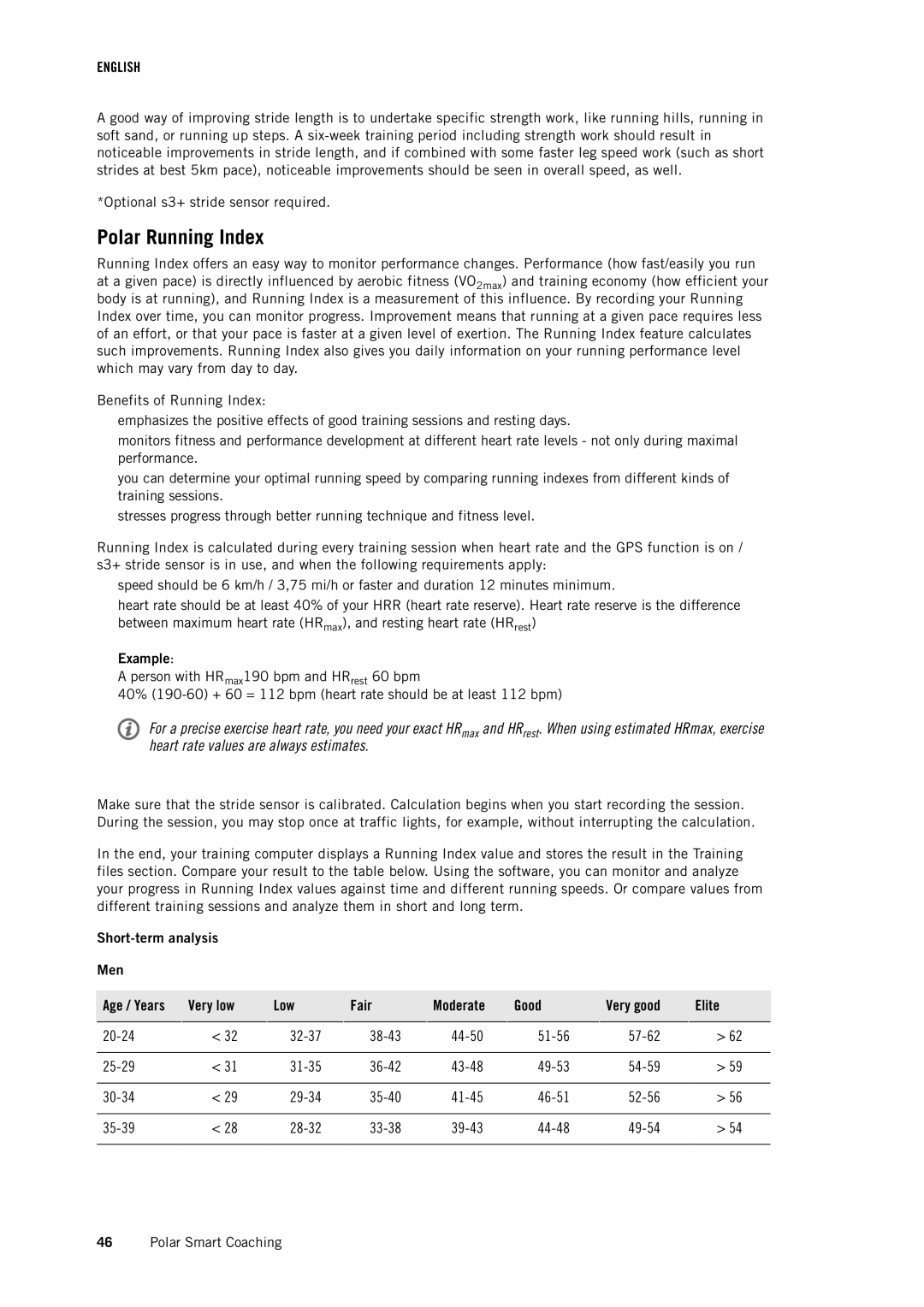ENGLISH
A good way of improving stride length is to undertake specific strength work, like running hills, running in soft sand, or running up steps. A
*Optional s3+ stride sensor required.
Polar Running Index
Running Index offers an easy way to monitor performance changes. Performance (how fast/easily you run at a given pace) is directly influenced by aerobic fitness (VO2max) and training economy (how efficient your body is at running), and Running Index is a measurement of this influence. By recording your Running Index over time, you can monitor progress. Improvement means that running at a given pace requires less of an effort, or that your pace is faster at a given level of exertion. The Running Index feature calculates such improvements. Running Index also gives you daily information on your running performance level which may vary from day to day.
Benefits of Running Index:
•emphasizes the positive effects of good training sessions and resting days.
•monitors fitness and performance development at different heart rate levels - not only during maximal performance.
•you can determine your optimal running speed by comparing running indexes from different kinds of training sessions.
•stresses progress through better running technique and fitness level.
Running Index is calculated during every training session when heart rate and the GPS function is on /
s3+ stride sensor is in use, and when the following requirements apply:
•speed should be 6 km/h / 3,75 mi/h or faster and duration 12 minutes minimum.
•heart rate should be at least 40% of your HRR (heart rate reserve). Heart rate reserve is the difference between maximum heart rate (HRmax), and resting heart rate (HRrest)
Example:
A person with HRmax190 bpm and HRrest 60 bpm
40%
![]() For a precise exercise heart rate, you need your exact HRmax and HRrest. When using estimated HRmax, exercise heart rate values are always estimates.
For a precise exercise heart rate, you need your exact HRmax and HRrest. When using estimated HRmax, exercise heart rate values are always estimates.
Make sure that the stride sensor is calibrated. Calculation begins when you start recording the session. During the session, you may stop once at traffic lights, for example, without interrupting the calculation.
In the end, your training computer displays a Running Index value and stores the result in the Training files section. Compare your result to the table below. Using the software, you can monitor and analyze your progress in Running Index values against time and different running speeds. Or compare values from different training sessions and analyze them in short and long term.
Short-term analysis
Men
Age / Years | Very low | Low | Fair | Moderate | Good | Very good | Elite |
|
|
|
|
|
|
|
|
< 32 | > 62 | ||||||
|
|
|
|
|
|
|
|
< 31 | > 59 | ||||||
|
|
|
|
|
|
|
|
< 29 | > 56 | ||||||
|
|
|
|
|
|
|
|
< 28 | > 54 | ||||||
|
|
|
|
|
|
|
|
46Polar Smart Coaching
